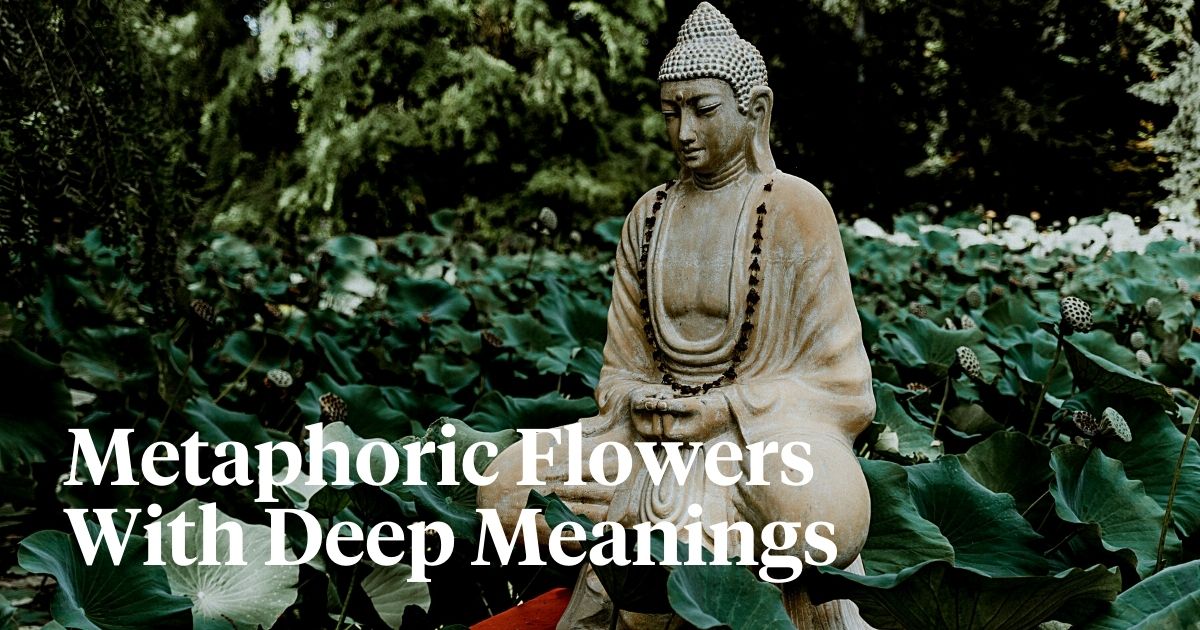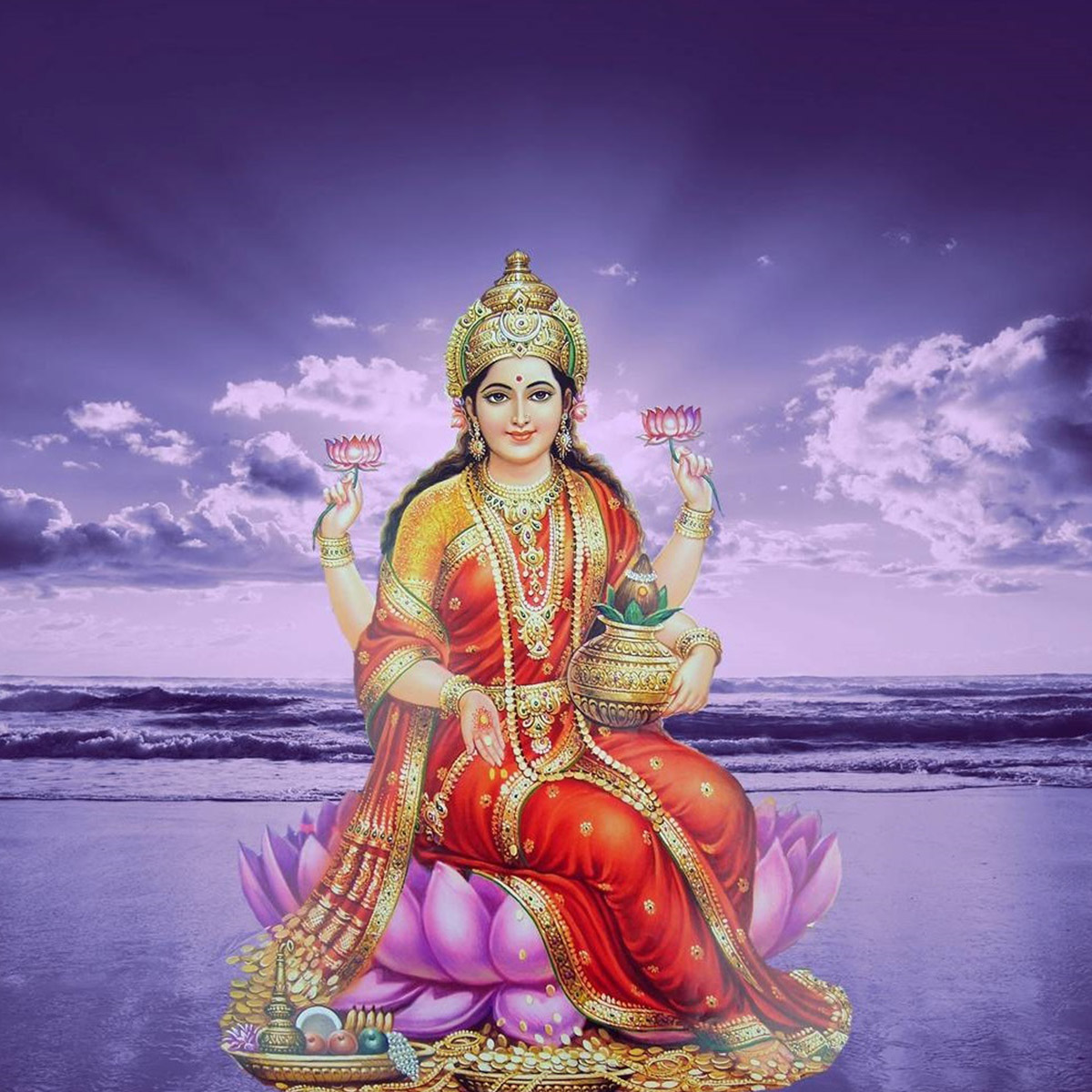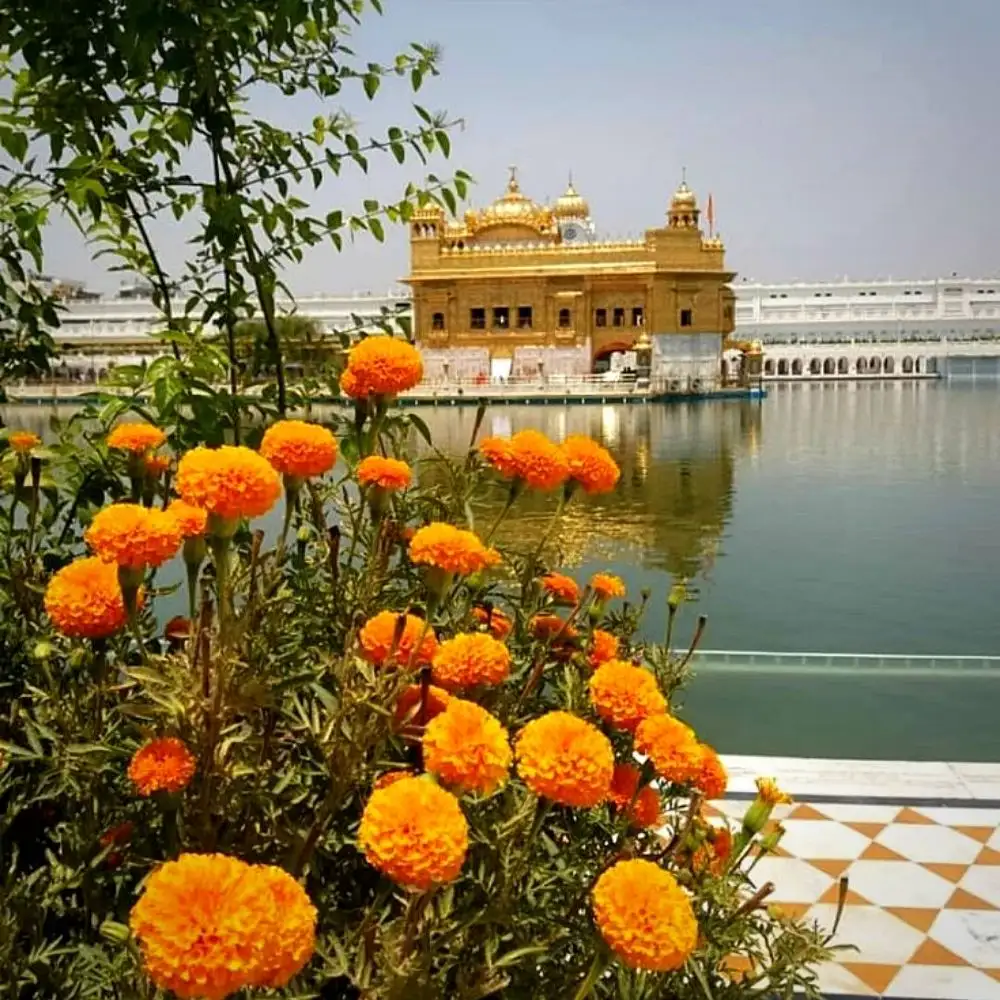Buddhism is founded on deep philosophical and ethical principles and has nurtured a pool of bits of wisdom over centuries. In Buddhist teachings, the Tripitaka, also known as the Pali Canon, is a revered collection of scriptures that illuminate the path to enlightenment.
Within the innards of the Tripitaka, there are a host of metaphorical flowers that bear symbolic meanings and offer insights into the nature of human existence. These flowers act as a guide for an ideal living that is pure and promotes the teachings of the Buddhist Holy Book.
Understanding the Tripitaka
The Tripitaka, often referred to as the Three Baskets in Pali and Sanskrit encompasses the foundational teachings of Buddhism. It comprises three distinct divisions, which are all the teachings of Buddha.
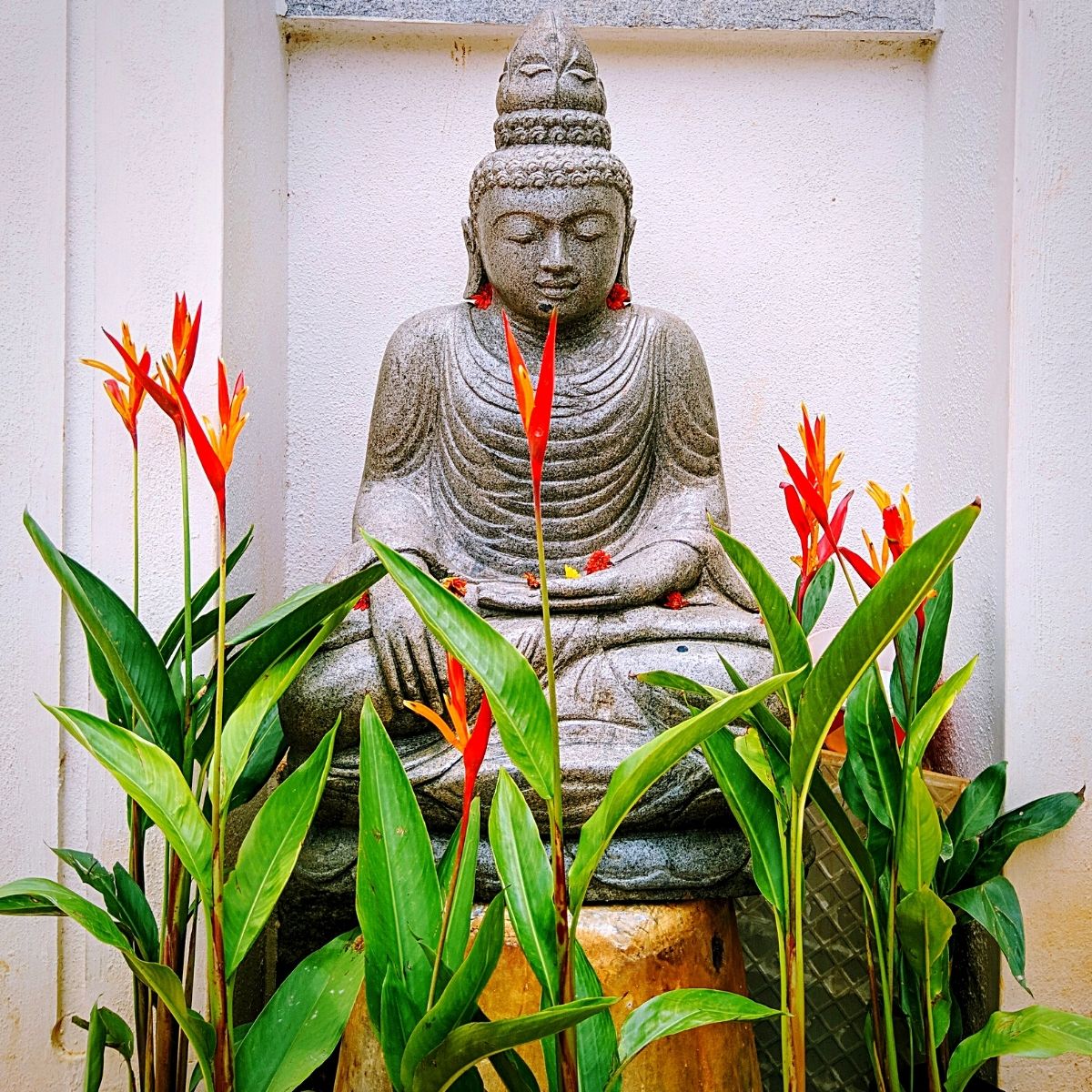
The three categories are Vinaya Pitaka (monastic discipline), the Sutta Pitaka (discourses of the Buddha), and the Abhidhamma Pitaka (philosophical analysis).
The Vinaya Pitaka
This basket offers guidelines for monastic conduct and ethical behavior, ensuring harmony within the sangha or monastic community.
The Sutta Pitaka
Sutta Pitaka contains the Buddha's discourses. This basket explores a wide array of topics, from meditation techniques to ethical dilemmas, and provides insight into the nature of reality and suffering.
The Abhidhamma Pitaka
This division focuses on the philosophical and psychological aspects of Buddhism, offering intricate analyses of consciousness, perception, and mental factors.
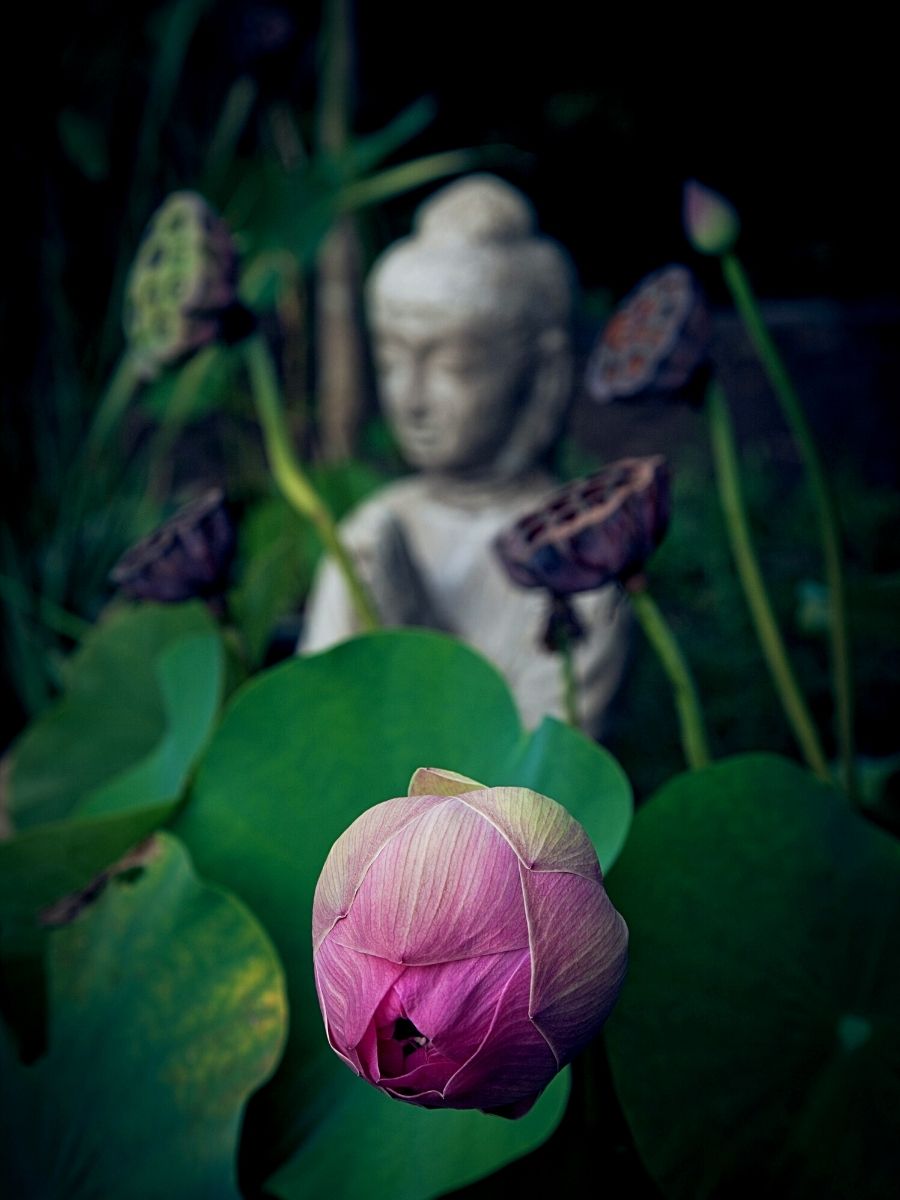
Ten Flowers in the Tripitaka
Plants and flowers often carry symbolism and deeper meanings. These allegories are usually intended to be communicative of topics ranging from romance to gratitude and even societal ideals necessary for perfect living.
The Tripitaka's collection of metaphorical flowers, likewise, seeks to express topics including wisdom and mindful living with each blossom carrying a unique message that guides Buddhist practitioners along their journey.
Understanding the nuanced meanings of these flowers enables practitioners to gain insights that encourage mindful living, ethical conduct, and the pursuit of enlightenment.
The most popular plants and flowers found in these sacred writings include:
Lotus Flower (Paduma)
The lotus flower, emerging untainted from muddy waters, is an emphatic symbol of purity, enlightenment, and the human potential to beat suffering. In this case, just as the lotus rises above the murkiness of muddy waters, so too can practitioners of Buddhism emerge from the challenges of life and gain spiritual awakening. This flower may grow in muddy water, but its petals remain clean and unblemished.
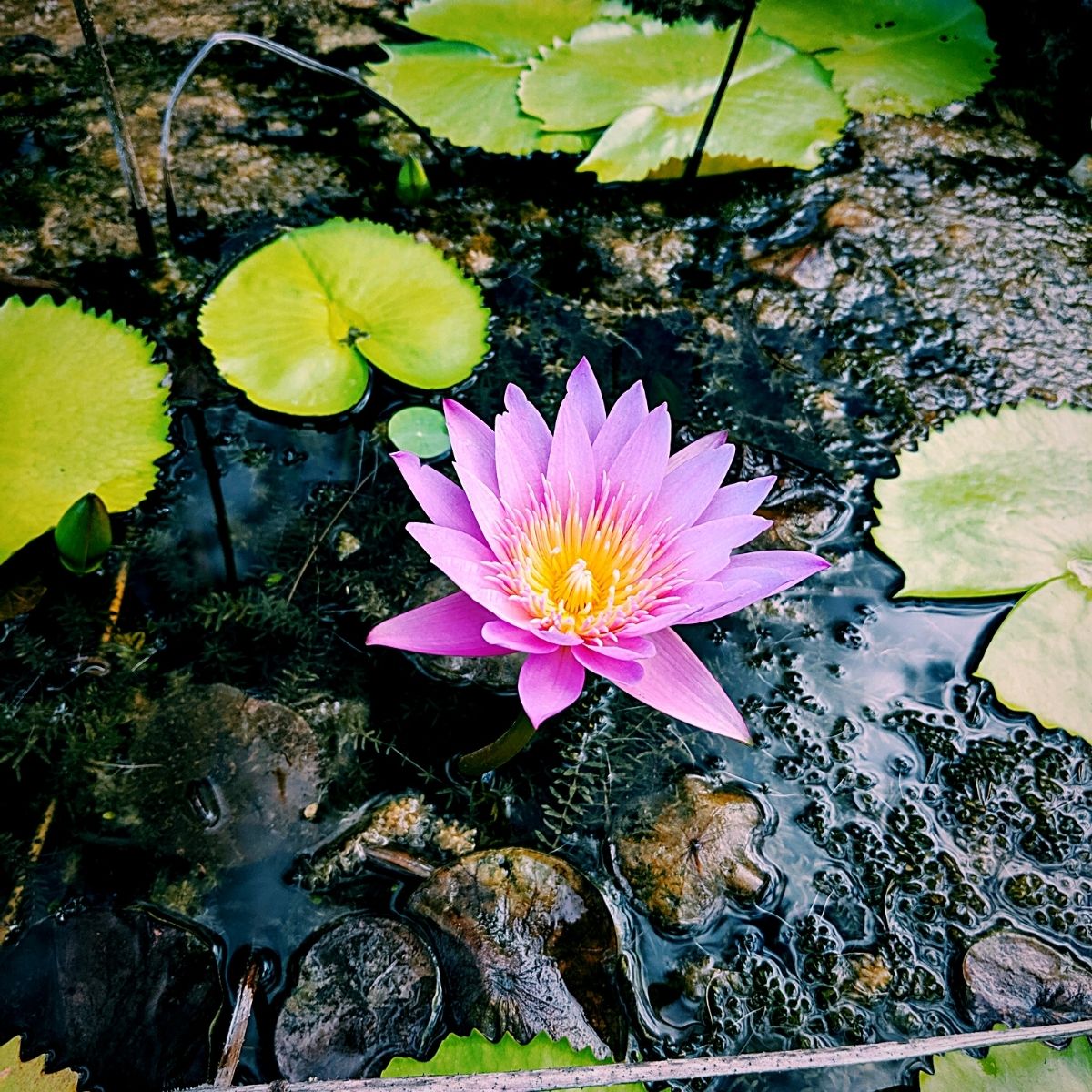
In fact, the lotus flower is said to be able to not only withstand the pollution of murky waters but also purify the water it grows in. It submerges below the water each night and reblooms in the morning, without trapping any damaging residue from its environment.
In the Tripaka, the lotus also mirrors the journey of Siddhartha Gautama, who, through his own enlightenment, illuminated the path for others to follow.
Udumbara Flower (Udumbara)
Udumbara is a Sanskrit word that means ‘an auspicious flower from heaven.’ According to Buddhist scriptures, the Udumbara flower is a rare and sacred symbol of the arrival of a holy king who will restore the true teachings of the Buddha.
In the Tripitaka, the udumbara flower is a symbol of rarity, representing the arrival of a great sage or an enlightened being. This flower's scarcity underscores the extraordinary nature of Buddha's teachings and the transformative impact they hold. The Buddhist scriptures also indicate that these flowers are a symbol of immortality and reincarnation of Buddha.
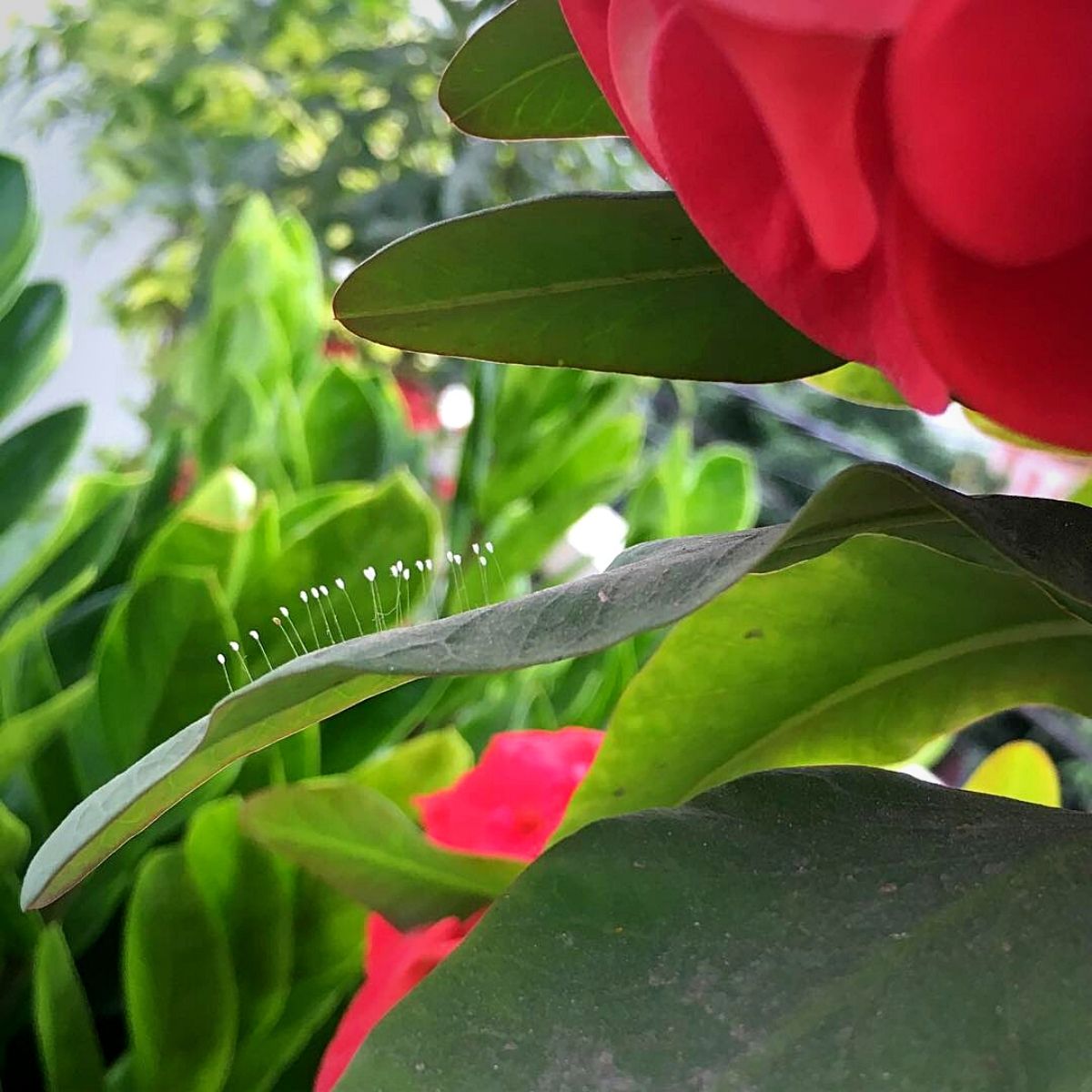
In line with the udumbara flower's appearance as a rare occurrence, it presents the rare opportunity to engage with and benefit from the wisdom found within the Tripitaka.
Mango Flowers
The mango flower's fleeting beauty and rapid withering are a poignant metaphor for the transitory nature of life. This symbolism aligns with the core Buddhist concept of impermanence. It is indicative of the fact that all things, even life itself, are subject to change.
Mango is also sacred to the Buddhists as Buddha performed a miracle in Shravasti. Buddha went to the king's garden, ate a mango, and planted the seed from which a tree sprouted and flowered immediately which is known as the Gandamba Tree.
In the Tripaka, recognizing the impermanence as demonstrated by the mango flowers helps practitioners nurture a deeper appreciation for the present moment and work towards liberation from attachment.
Sala Flower (Sala)
In Buddhism, the sala flower also holds symbolic significance and is often associated with various aspects of Buddhist teachings. While the sala flower is not as widely known or extensively discussed as some other symbols in Buddhism, it does carry meaning in different contexts.
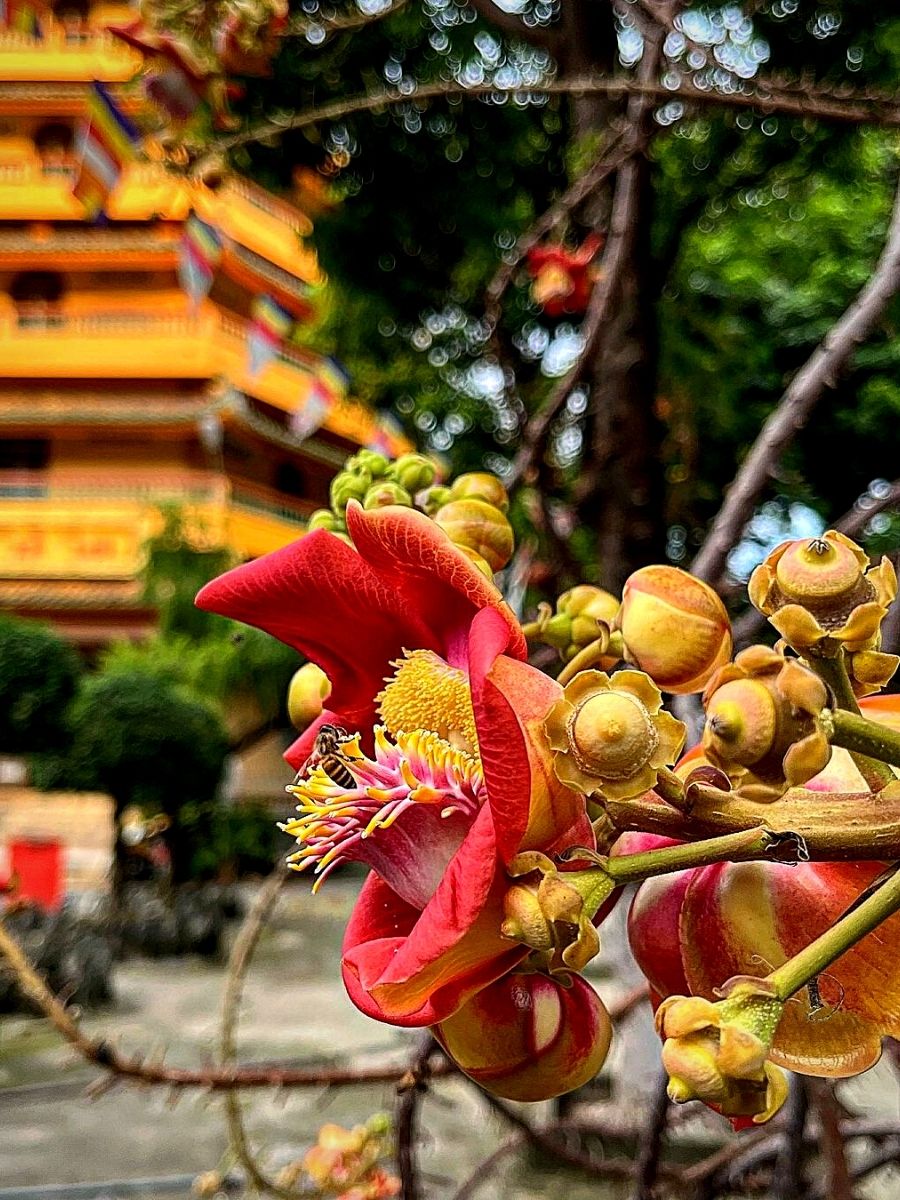
The sala flower’s interconnected petals embody the principle of interdependence, which is a central teaching in Buddhism. Each of its petals seems to rely on the others to form the flower, so too are all beings interconnected, building the web of existence.
The flower is sometimes also seen as a symbol of purity and spiritual awakening. It is believed to represent the blossoming of enlightenment and the purification of one's mind and heart through Buddhist practice.
As earlier mentioned, in Buddhism, the concept of impermanence (anicca) is a fundamental teaching that emphasizes the transient and ever-changing nature of all phenomena. The sala flower's blossoming and eventual fading are, therefore, also a symbol of the impermanent nature of existence and the importance of mindfulness and non-attachment.
The flower also symbolizes spiritual growth and a symbol of devotion and reverence. It can be presented as an offering on altars, shrines, or during religious ceremonies to express devotion.
Jasmine Flower (Mallika)
The jasmine flower, known as Mallika in some Buddhist traditions, also holds symbolic significance. This flower gets its name from the berries that are orange-red. The petals of the flower are more white/cream-colored.
While the jasmine flower is not as commonly discussed in Buddhist symbolism as other flowers like the lotus, it does have particular meanings in specific contexts.
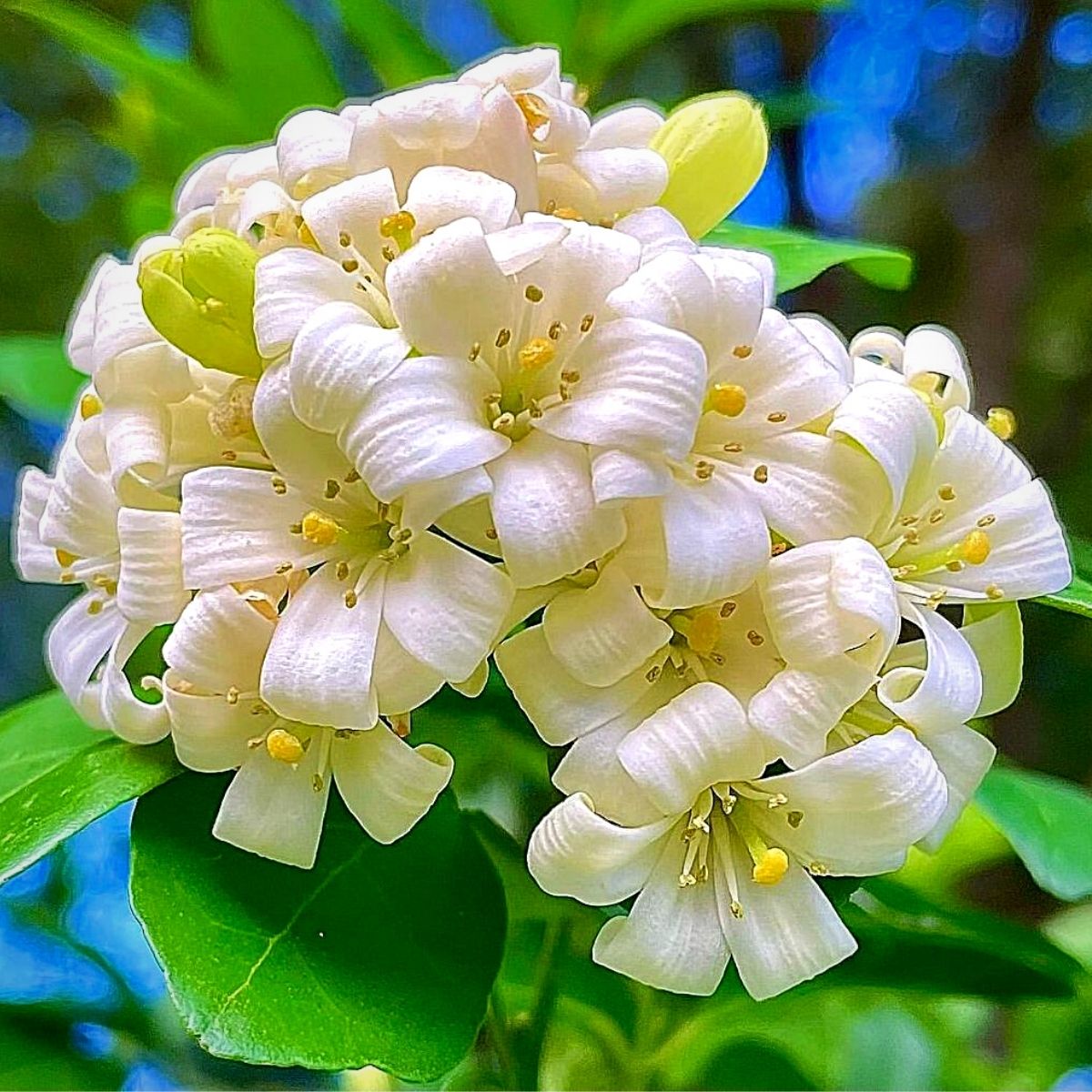
Its fragrance has earned it a place as a symbol of purity within some Buddhist teachings. It is also associated with grace and the aspiration for spiritual perfection. The sweet scent of the jasmine flower can be seen as a metaphor for the fragrance of virtuous qualities and the wholesome actions that emanate from a pure heart.
It is also symbolic in offerings and devotion, where it can be presented on altars, shrines, or during rituals as an expression of deep respect and devotion to the Buddha, Dharma, and Sangha.
Like all flowers, the jasmine flower is subject to the impermanence of existence. In Buddhism, the teachings on impermanence emphasize the transient and ever-changing nature of all phenomena and hence the flower's ephemeral bloom and its inevitable fading are a reminder of this.
The jasmine flower is also often associated with simplicity and humility due to its unassuming beauty and modest white petals that symbolize the virtues of modesty, humility, and contentment, while in some interpretations it can be seen as a metaphor for the spiritual path in Buddhism.
Parijaat Flower
Also known as Har Singaar or night-blooming jasmine, this flower holds symbolic significance and is associated with various meanings. Despite its name, the flower is actually not a jasmine. The Parijaat flower is a mythical flower that is mentioned in Buddhist scriptures and folklore to be associated with celestial places. It is often depicted in Buddhist art as a heavenly flower.
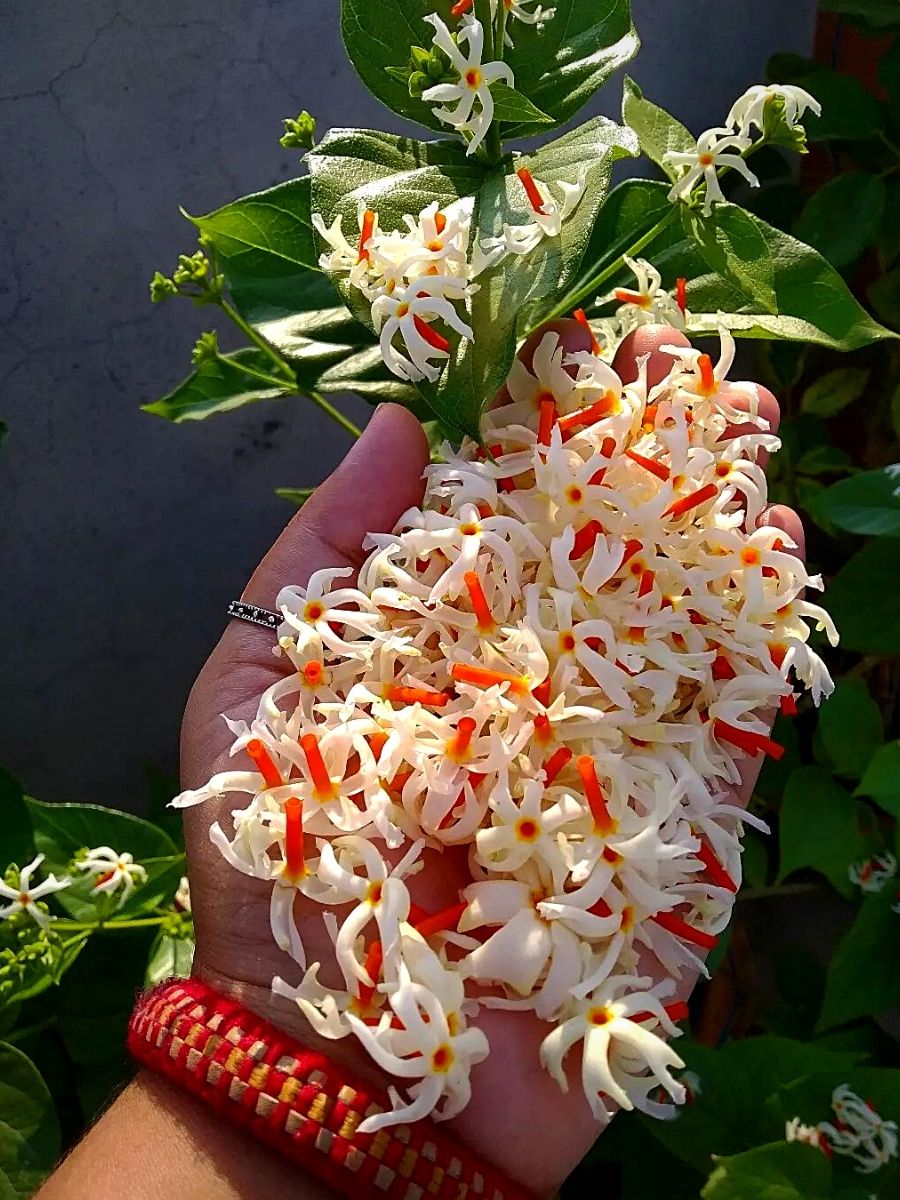
It symbolizes the beauty and splendor of the heavenly lands and is hence often considered a symbol of transcendence and enlightenment. It blooms in the celestial realms like the Tavatimsa heaven where the divine and enlightened beings reside.
The Parijaat flower is, also, seen as a symbol of renunciation and detachment from worldly attachments. Its blooming at night suggests a detachment from the sensual pleasures and distractions of the world.
In principle, the flower, renowned for its beauty, embodies the notion of the unattainable and its presence in the Tripitaka is a cue of the importance of seeking enlightenment, which is the only pursuit that goes beyond the limits of impermanence and dissatisfaction.
Utpala
Growing gracefully in stagnant waters, this flower is oftentimes considered a blue water lily or a blue lotus and is a symbol of purity and potential for growth even in adverse conditions. This flower is also associated with enlightenment.
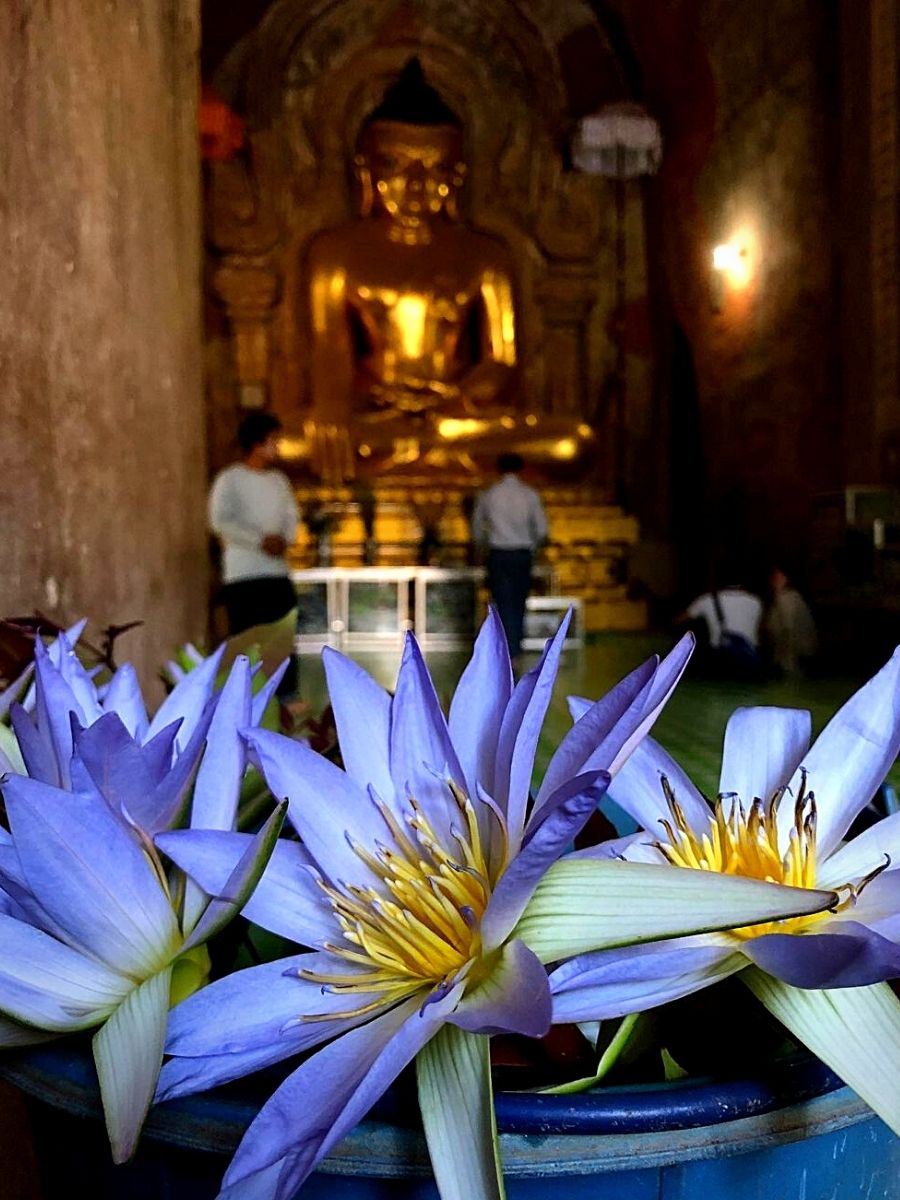
Just like the lotus flower, the Utpala flower emerges from muddy waters but remains untainted by impurities. It symbolizes the potential for spiritual purity and the awakening of wisdom and enlightenment amidst the defilements of the world.
In some interpretations, the Utpala flower is linked to the bodhisattva ideal, which is the aspiration to attain enlightenment for the benefit of all beings. The flower's blue color is seen as a representation of compassion and the bodhisattva's commitment to alleviating the suffering of others.
It can also be symbolic of transcendence and liberation from the cycle of birth and death, wisdom and knowledge, and resilience and perseverance in the face of adversity.
Palash Flower (Butea Monosperma)
While the Palash flower, also known as the flame of the forest or Butea monosperma, may not be implicitly mentioned in the Tripitaka, in general, it holds symbolic significance in Buddhism. The Palash flower can be interpreted symbolically within a broader Buddhist context to indicate the beauty of nature and the natural world and their appreciation. It is also symbolic of impermanence, awakening, renewal, and regeneration.
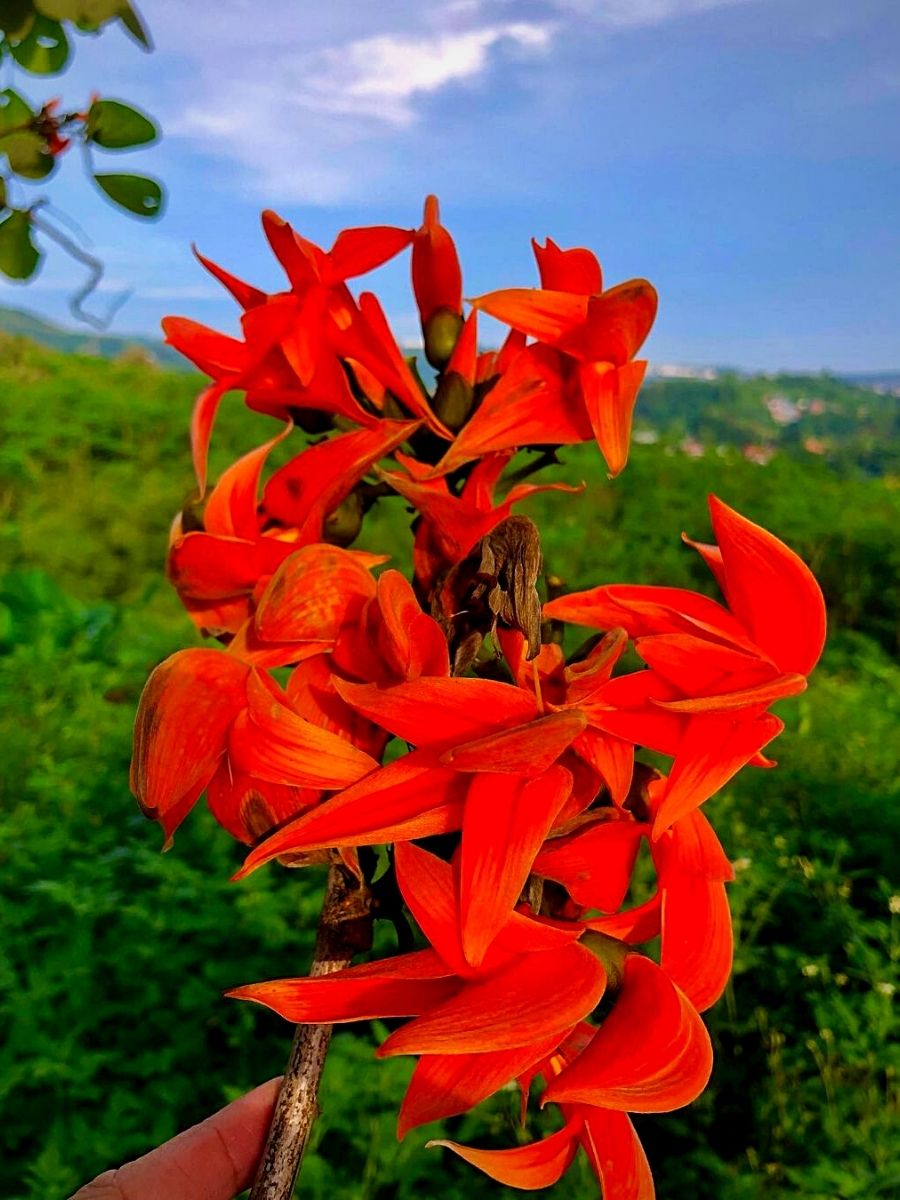
The flower blooms during the spring season, symbolizing renewal and regeneration, and in Buddhism, this can be associated with the idea of spiritual renewal and personal growth.
The Palash flower is often found in forest areas and this is also associated with asceticism and renunciation. In Buddhism, renunciation refers to letting go of attachments and desires that cause suffering. The Palash flower's presence in the forest can symbolize the renunciant's path of emphasizing simplicity, detachment, and the pursuit of spiritual liberation.
The vibrant red or orange color of the flower is also associated with energy and vitality. In some interpretations, this fiery hue symbolizes the transformative power of wisdom and spiritual awakening.
White Sandalwood Flower
White sandalwood flowers, in general, hold metaphorical significance in Buddhism and can be interpreted symbolically within a wider Buddhist context. The fragrance of the flowers is sometimes associated with virtuous and positive qualities that originate from spiritual practice.
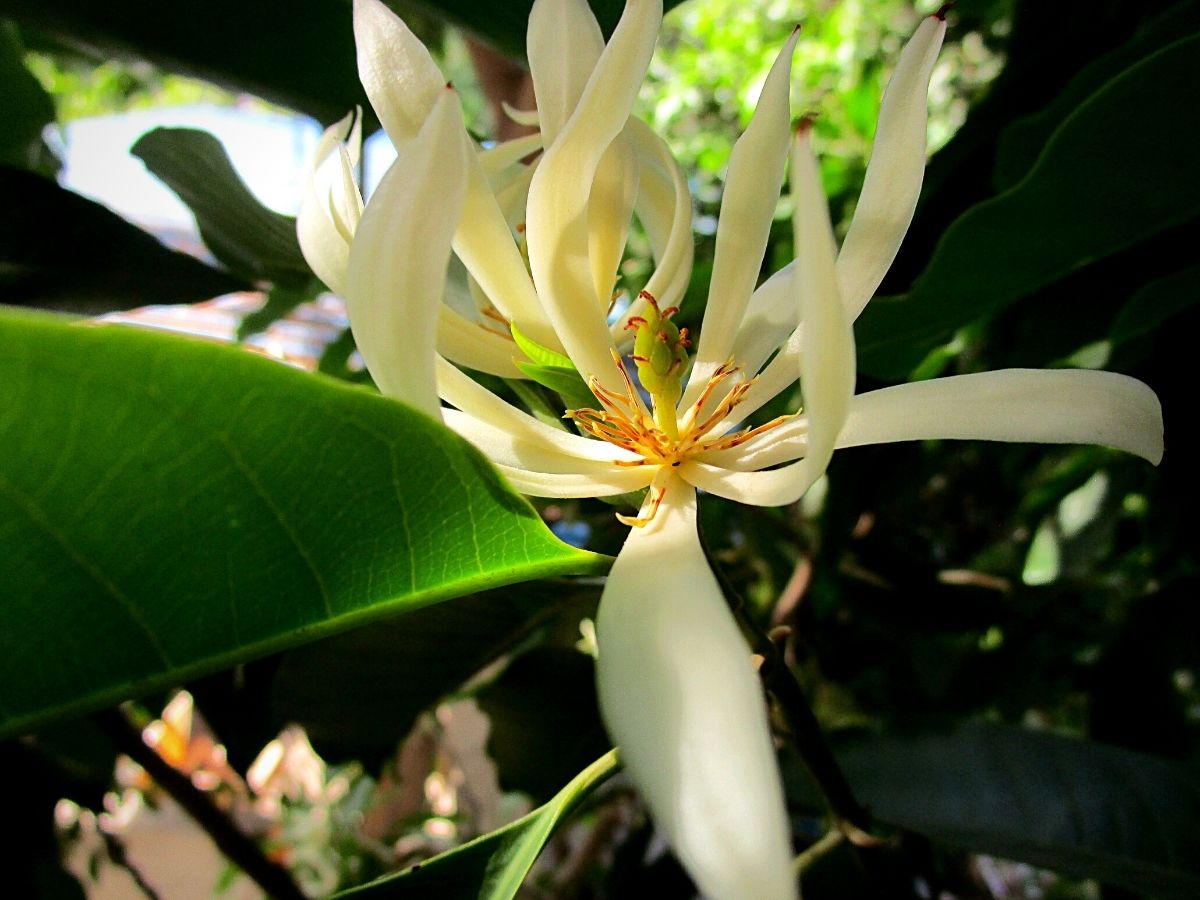
Again, this flower is every so often associated with purity and cleanliness, as well as enlightenment, and in Buddhism, purity is an essential aspect of spiritual practice, involving the cleansing of one's mind, intentions, and actions. Its white color can symbolize the cleanliness of the mind and the aspiration for spiritual growth and transformation.
Sandalwood has, also, long been used in various cultures as an aid in meditation due to its calming and grounding properties. The same applies in Buddhism, where it also is used in offering and devotion.
Kapittha Fruit Plant (Kaitha)
Also known as the wood apple or Limonia acidissima, the Kapittha fruit plant can be varyingly interpreted symbolically in Buddhism.

It can be seen as a symbol of the wholesome qualities that arise from the practice of Buddhist teachings, the nourishing and sustaining qualities of generosity that remind Buddhist practitioners of the importance of offering support to others on their spiritual path or being associated with the transformative journey of spiritual development.
Just as fruits have a limited lifespan and eventually decay, Kapittha fruit flowers can also symbolize the impermanence of all conditioned phenomena.
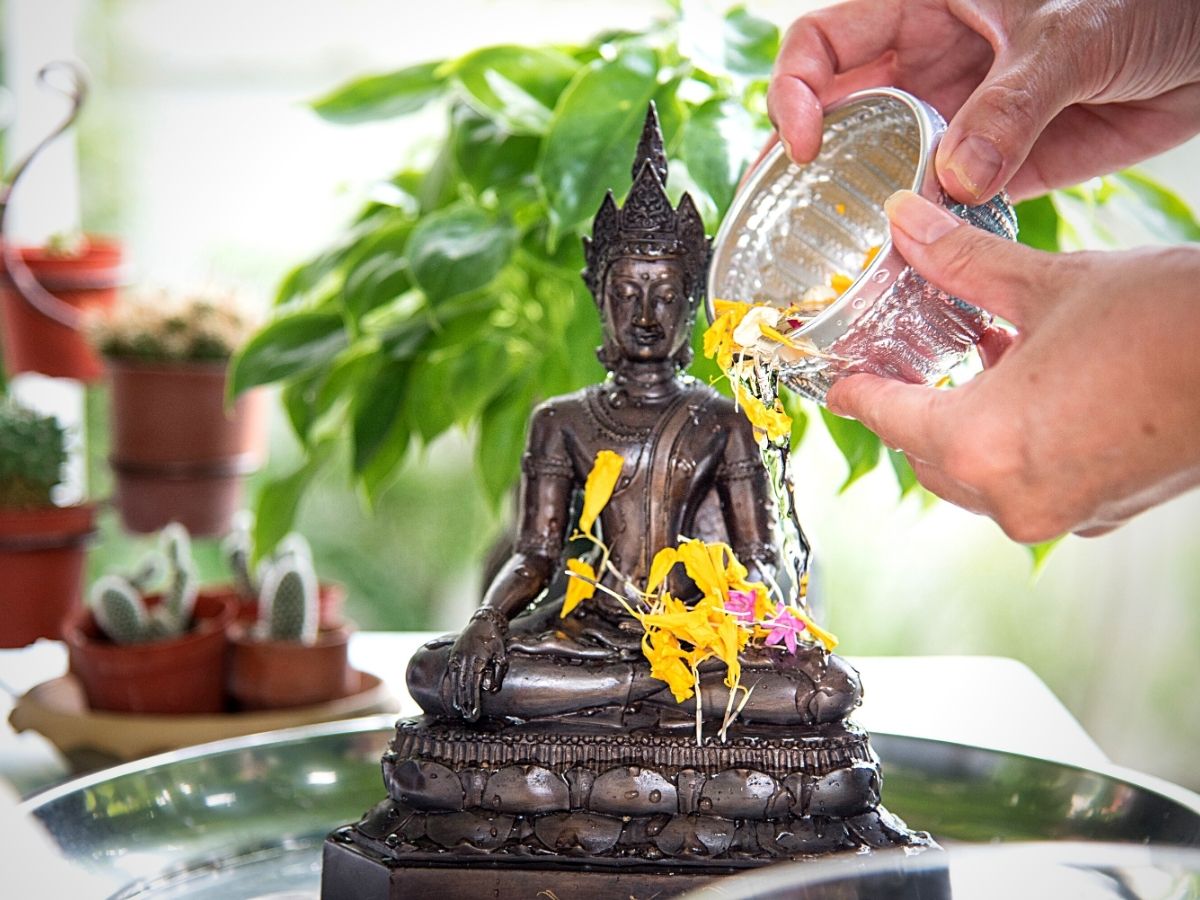
And with that, just like any other sacred book, the Tripaka presents plants and flowers exemplifying deep symbolism and significance that adherents can use as a guide for ideal living.
Buddhism vs. Hinduism
You will notice that many flowers that carry symbolism in Buddhism also appear in Hindu scriptures, like the Baghavad Gita. This makes sense since Buddhism and Hinduism have common origins in the culture of Ancient India. Both religions have many shared beliefs and practices but also pronounced differences. Still, the strong symbolism of flowers. Yet the strong symbolism of flowers spans both religions so that- despite the big differences - some connection can be found.
Feature image by Vladimir Maliutin, header image by David Bartus on Pexels.

